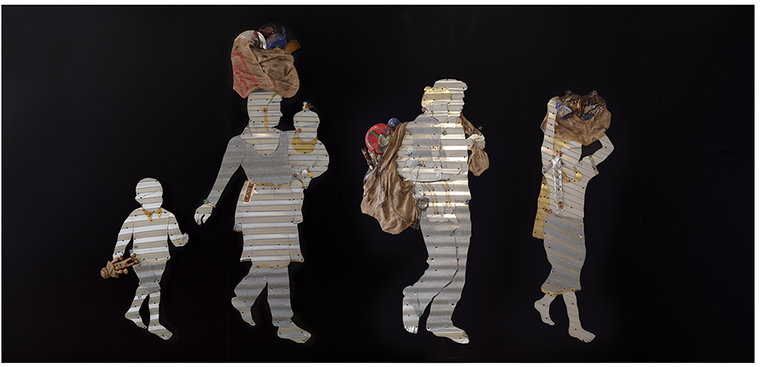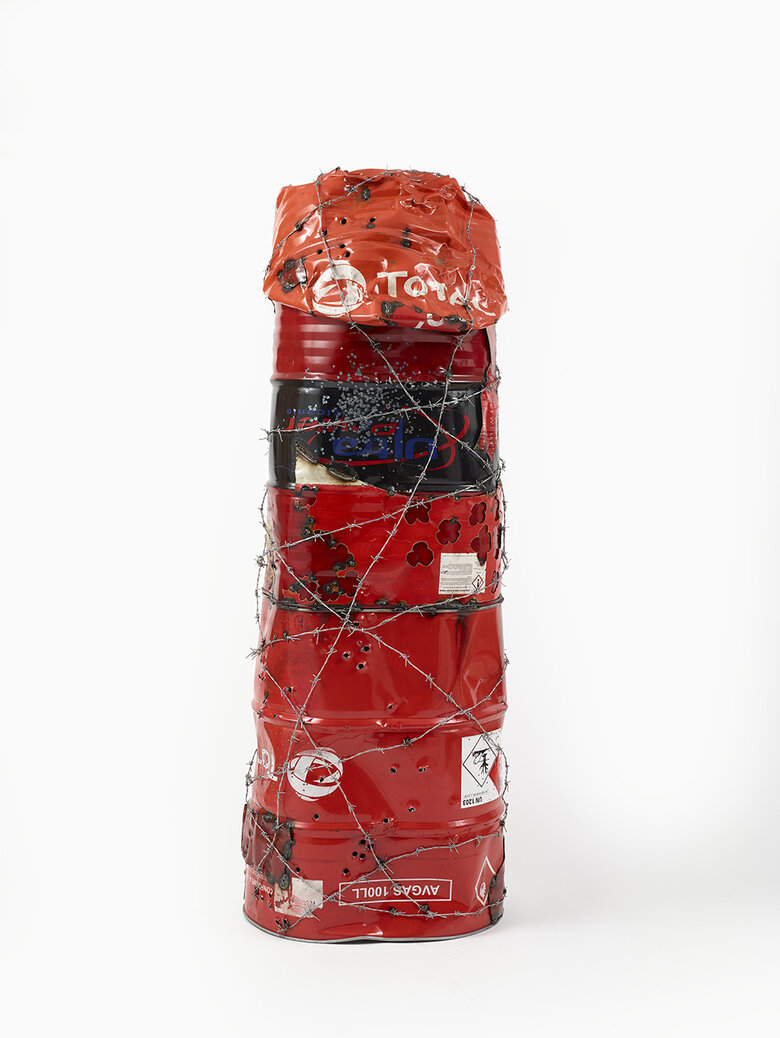We will return after six days, 2015, is a four-piece installation, made from corrugated steel sheets. It features a migrating refugee family of six. A young boy follows his mother and father, each carrying a toddler in their arm, along with their belongings. An older girl leads the way, firmly holding in place a bag on her head, while she walks. The bags, in hessian cloth, are full to the brim with kitchen utensils and other basic household items. A set of keys hangs visibly from the father’s waist, while the family moves forward, in seemingly steady and synchronized steps.
Born and raised in Sabra and Chatila Palestinian camps in Beirut, Abdul Rahman Katanani has featured Palestine in most of his work. We will return after six days represents the Palestinian plight of homelessness and displacement. In the installation, the family members seem barefooted and faceless, conveying an unmistakable sense of vulnerability. They are heading toward an uncertain future. Their outfits, made of horizontal corrugated sheets, hint at prisoners’ striped uniforms, and the predominant dull grayish color palette portrays the dreariness of refugee life.
Many elements in Katanani’s work are symbolic of the Palestinian plight. Integrating the two words “six days” in the installation’s title hints at the Six-Day war between Israel and the neighboring Arab countries, also known as (al-Naksah). The war led to the occupation of the remaining Palestinian territories, including the West Bank, East Jerusalem, and the Gaza Strip. It forced the displacement of hundreds of thousands of Palestinians. In the artwork, the keys on the father’s waist hint at the right of return, held by many Palestinians as an inalienable, almost divine, right. Both references are a powerful reminder of the cruelty of collective, incremental helplessness.
Nonetheless, Katanani is far from a defeatist. On the contrary, his choice of hard, zinc-plated steel as a medium is representative of endurance and resilience. In addition, the family members walking in a forward direction demonstrate steadfastness. Again, for Katanani, children are a symbol of hope. In the installation and most of his works, children are unburdened and carefree. They are either carried or playing. Indeed, the young boy’s toy in this installation has made the migration journey. Similarly, the kitchenware, garments, and metal were carried to ensure food, shelter, and clothing in the face of a potentially lethal crossing. As such, they turn into a refugee survival kit of sorts.
Katanani favors the use of sustainable, recycled material commonly found in refugee camps. “Garbage once had a life, and [….] contains stories,” he asserts. This deliberate choice of medium makes his work gain universality and fosters empathy towards a population increasingly vilified on the world stage.



-AbdulRahmanKatnani-Front.jpg)
-AbdulRahmanKatnani-Front.jpg)
-AbdulRahmanKatnani-Front.jpg)
-AbdulRahmanKatnani-Front.jpg)
-low.jpeg)
-low.jpeg)
.jpg)
.jpg)
.jpg)
.jpg)



